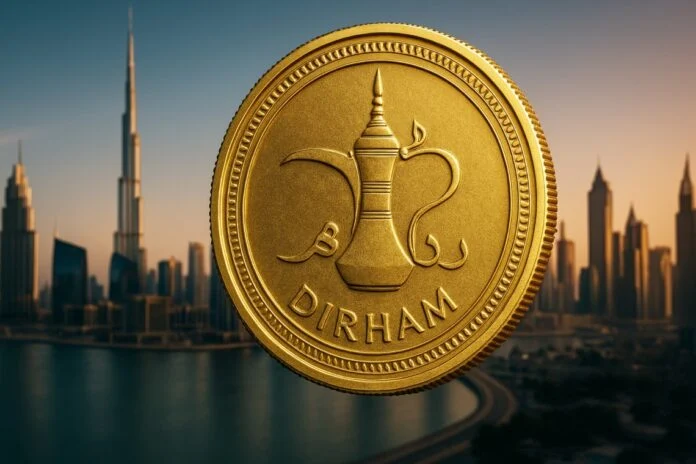Dubai advances in the world of blockchain: the Dirham digitale will be launched by the last quarter of 2025. The Central Bank of the United Arab Emirates (CBUAE) has unveiled the new symbol of the national currency, both digital and physical.

Summary
Dubai advances with blockchain: the digital Dirham will be issued by the last quarter of 2025
The Central Bank of the United Arab Emirates (CBUAE) has unveiled the new symbol of the Dirham. The national currency will be issued in its digital version by the last quarter of 2025, for the retail sector.
According to what is reported, Dubai and UAE are ready to confirm their position as a leading global financial hub, utilizing a blockchain infrastructure.
In fact, the CBUAE emphasized that the “Digital Dirham” is the digital version of the UAE’s national currency, characterized by high levels of security and efficiency, contributing to reducing payment costs thanks to the use of blockchain technology.
Among its innovative features, the Digital Dirham facilitates tokenization, enhancing financial inclusion and efficiency and expanding access to liquidity through the fractionalization of digital assets.
The digital Dirham is used with smart contract to program the execution of complex transactions automatically, adjusting them instantly. Such smart contract can also manage multi-stage and multi-party transactions, which involve conditions or obligations.
Dubai and the Digital Dirham on the Way: the New Symbol Just Unveiled
The new symbol of the Dirham, both digital and physical, embodies the initiative that showcases the progress of the program dedicated specifically to the digital version of the UAE national currency.
Specifically, the letter “D” was chosen, derived from the English name of the Dirham, to serve as an international symbol. The symbol incorporates two horizontal lines that represent the stability of the currency and the country and are inspired by the UAE flag.
Another characteristic of the symbol is the presence of a circle that surrounds the symbol of the physical currency, using the colors of the UAE flag, thus reflecting national pride and identity.
La CBUAE also presented the integrated platform for the issuance, circulation, and use of currency in its digital format.
The portfolio has been designed to be used and managed with ease by both individuals and businesses and allows for a series of financial transactions: retail, wholesale, and cross-border payments, money transfers and withdrawals, top-ups, and redemption of the digital Dirham when necessary.
In this regard, S.E. Khaled Mohamed Balama, Governor of the CBUAE, stated:
“We are proud to present today the new symbol of the UAE’s national currency, the “Dirham”, both in its physical and digital form, and the design of the digital Dirham wallet. This reflects the significant progress in the implementation of the Digital Dirham program and a step forward towards achieving the objectives of the CBUAE. The Digital Dirham, as a blockchain-based platform with cutting-edge capabilities, is expected to substantially enhance financial stability, inclusion, resilience, and the fight against financial crime. It will also enable the development of innovative digital products and services and new business models, while reducing costs and increasing access to international markets.”

The recognition of stablecoin and collaboration with Ripple
Only in this month of March, Dubai has made headlines in the crypto sector. In fact, the Dubai Financial Services Authority (DFSA) has officially recognized Circole’s stablecoins, USDC and EURC.
This decision marks an important milestone for the adoption of digital assets in the UAE, as well as Dubai’s openness to integrating crypto into the local financial sector.
Another crypto news of the month is the one involving Ripple which has become the first authorized blockchain provider in the Dubai International Finance Centre (DIFC). Here too, the crypto company has obtained its license directly from DFSA, authorizing it to operate also in the field of cross-border crypto payments which become regulated in the UAE.
Still in Dubai, then, the largest digital bank of the Emirates NBD group, Liv, has launched its crypto offering through the Liv X app. Thanks to the collaboration with Aquanow and Zidia Custody, the bank’s customers can buy, hold, and sell crypto directly on the Liv X app.
